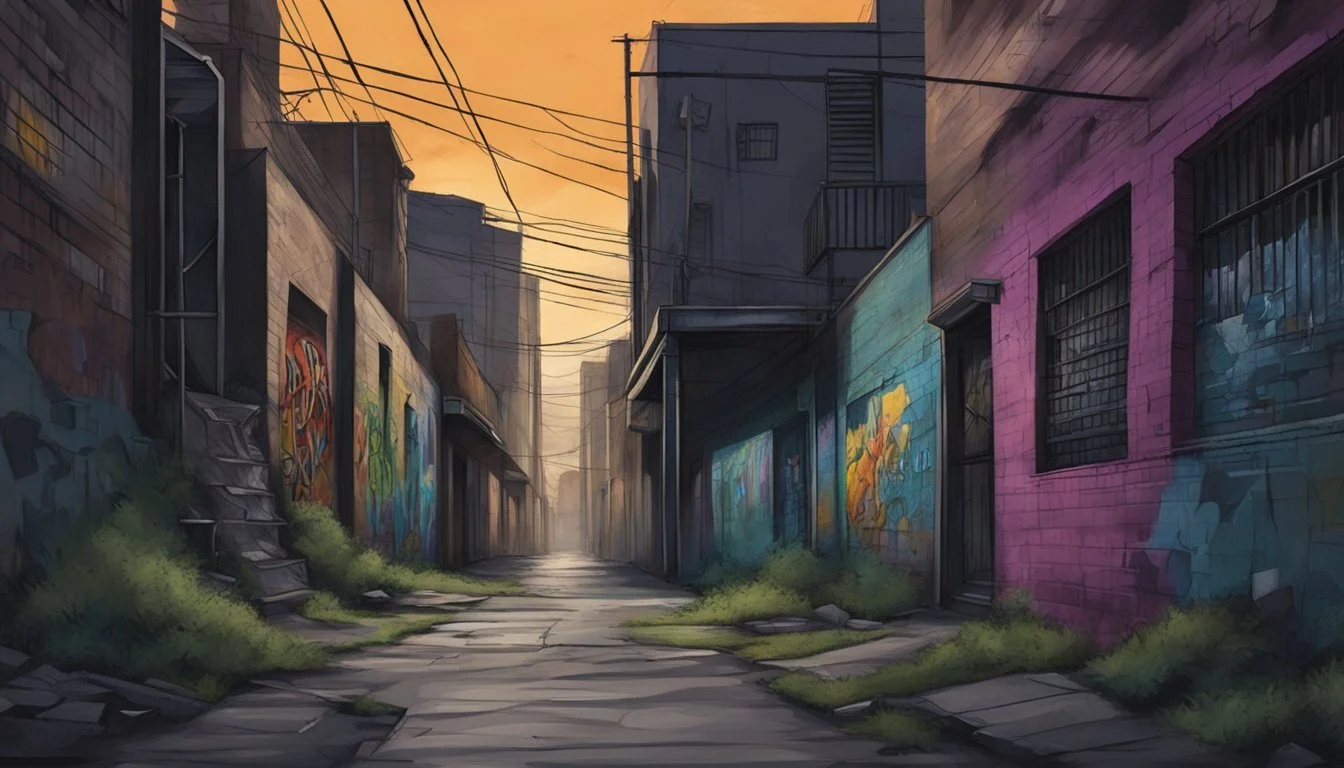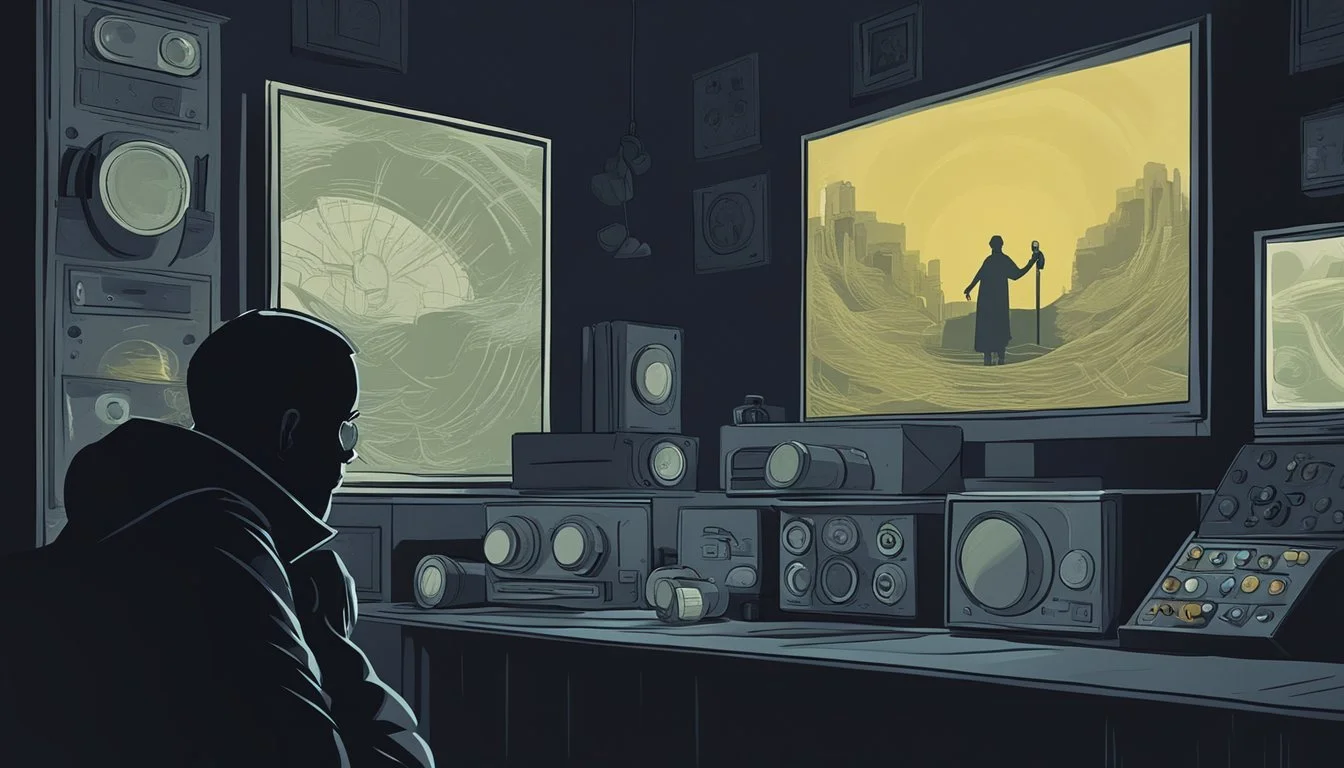Chester Turner: 5 Haunting Documentaries on the South Central Slayer
Exploring the Chilling Legacy of a Serial Killer
Chester Turner's crimes shocked Los Angeles in the late 1980s and 1990s. Known as the "Southside Slayer," Turner was convicted of murdering 14 women and an unborn child, leaving a trail of devastation in his wake. His case has since become the subject of numerous documentaries, exploring the dark depths of his actions and their impact on the community.
These documentaries offer viewers a chilling glimpse into the mind of a serial killer and the investigation that ultimately brought him to justice. From in-depth analyses of Turner's background to interviews with law enforcement and survivors, these films shed light on a tragic chapter in LA's history. They serve as both a warning and a reminder of the importance of vigilance in protecting vulnerable members of society.
1) Tales of the Grim Sleeper
"Tales of the Grim Sleeper" is a 2014 documentary film directed by Nick Broomfield. It explores the case of Lonnie David Franklin Jr., a serial killer who terrorized South Central Los Angeles for over two decades.
The film delves into the investigation of Franklin, nicknamed the "Grim Sleeper" due to an apparent 14-year gap in his killing spree. Broomfield interviews local residents, law enforcement officials, and survivors to piece together the story.
Through these conversations, the documentary sheds light on the systemic issues that allowed Franklin to evade capture for so long. It examines the role of race, class, and police indifference in the case.
Broomfield's documentary also highlights the community's efforts to bring attention to the murders and seek justice for the victims. The film runs for 110 minutes and is primarily in English.
"Tales of the Grim Sleeper" received critical acclaim for its thorough investigation and powerful storytelling. It offers a compelling look at a disturbing chapter in Los Angeles crime history.
IMDB: Tales of the Grim Sleeper
2) South Central Killers: A Hidden Terror
"South Central Killers: A Hidden Terror" delves into the dark underbelly of Los Angeles in the late 1980s and 1990s. This documentary explores the reign of Chester Turner and other serial killers who terrorized South Central during that period.
The film examines how socioeconomic factors and institutional neglect created an environment where predators like Turner could operate undetected for years. It highlights the challenges faced by law enforcement in solving these cases.
Interviews with survivors, victims' families, and investigators provide a haunting glimpse into the impact of these crimes on the community. The documentary also addresses the media's role in perpetuating stereotypes and overlooking the victims.
"South Central Killers" sheds light on the lives of those affected and honors the memory of the victims. It serves as a sobering reminder of a troubled era in Los Angeles history and the importance of addressing systemic issues to prevent future tragedies.
3) The Lost Women of South Central
"The Lost Women of South Central" is a powerful documentary that sheds light on the victims of Chester Turner's heinous crimes. This film explores the lives of the women who fell prey to the South Central Slayer.
The documentary paints a vivid picture of the community affected by Turner's actions. It delves into the socioeconomic factors that made these women vulnerable to predators like him.
Interviews with family members and friends of the victims provide intimate insights into their lives. The film also examines the challenges faced by law enforcement in solving these cases.
"The Lost Women of South Central" raises important questions about systemic issues in marginalized communities. It highlights the lack of media attention given to crimes against women of color.
The documentary serves as a memorial to the victims, ensuring their stories are not forgotten. It also emphasizes the importance of community vigilance and support in preventing such tragedies.
https://www.imdb.com/title/tt5805802/
4) City of Angels, City of Death
City of Angels, City of Death is a documentary series that premiered in 2021. It explores the dark period in Los Angeles history when multiple serial killers operated simultaneously during the 1970s and 1980s.
The six-part series features interviews with detectives from the LAPD's Robbery-Homicide Division. These officers were tasked with tracking down and apprehending the killers terrorizing the city.
First-hand accounts from investigators provide insight into the challenges they faced. The series documents their efforts to bring justice for victims and survivors during this chilling era in LA.
While the series covers several serial killers active in Los Angeles, it offers context for understanding the environment in which Chester Turner operated. It illuminates the broader criminal landscape of the time.
City of Angels, City of Death is available for streaming on Hulu and Disney+. The series provides a factual look at a troubling chapter in Los Angeles history through the lens of law enforcement.
https://www.imdb.com/title/tt15677150/
5) Murder in the Bayou: South Central Edition
"Murder in the Bayou: South Central Edition" is a speculative documentary that draws parallels between Chester Turner's crimes and the unsolved murders in Jennings, Louisiana. This hypothetical film explores the similarities in victim profiles and investigative challenges.
The documentary examines how socioeconomic factors and substance abuse issues in both South Central Los Angeles and rural Louisiana may have contributed to the vulnerability of victims. It highlights the difficulties law enforcement faced in both cases due to limited resources and community distrust.
Interviews with detectives from both regions provide insights into the investigative techniques used to solve serial murder cases in different environments. The film also features criminologists who analyze the patterns of predatory behavior in urban and rural settings.
"Murder in the Bayou: South Central Edition" serves as a comparative study of two distinct yet eerily similar cases. It sheds light on the systemic issues that can allow serial killers to operate undetected for extended periods in different parts of the country.
The Life and Crimes of Chester Turner
Chester Turner's criminal activities spanned over a decade, leaving a trail of violence and tragedy in Los Angeles. His actions shocked the community and challenged law enforcement.
Early Life
Chester Dewayne Turner was born on November 5, 1966, in Warren, Arkansas. He moved to Los Angeles as a child with his mother. Turner struggled in school and dropped out before graduating high school.
As a young adult, Turner faced instability and homelessness. He worked odd jobs but often found himself unemployed. This period of his life was marked by substance abuse issues and minor criminal activities.
Criminal Activities
Between 1987 and 1998, Turner committed a series of brutal murders in Los Angeles. His victims were primarily women in the South Central area, earning him the moniker "South Central Slayer."
Turner's method involved strangling his victims. He targeted vulnerable individuals, often those involved in sex work or struggling with addiction. His crimes went undetected for years, allowing him to continue his killing spree.
DNA evidence later linked Turner to at least 14 murders, including that of an unborn child. The true extent of his crimes remains uncertain, with some speculating he may be responsible for additional unsolved cases.
Capture and Conviction
Turner's capture came through advances in DNA technology. In 2002, while serving time for an unrelated rape conviction, his DNA was entered into California's CODIS database.
This led to matches with multiple unsolved murders. Los Angeles police arrested Turner in 2003 for these crimes. In 2007, he was convicted of 10 murders and sentenced to death.
A second trial in 2014 resulted in four additional murder convictions. Turner currently remains on death row in San Quentin State Prison, awaiting execution for his crimes.
Psychological Profile
Chester Turner's psychological makeup reveals a complex and disturbing pattern of behavior. His actions and background provide insights into the mind of one of Los Angeles' most prolific serial killers.
Behavioral Analysis
Turner exhibited predatory behavior, targeting vulnerable women in impoverished areas. He showed a lack of empathy and remorse for his victims. His crimes were opportunistic, often committed while he was homeless or living transiently.
Turner's method of killing - strangulation - suggests a desire for control and dominance over his victims. He disposed of bodies in alleys and abandoned buildings, indicating a callous disregard for human life.
His ability to evade capture for years points to a degree of cunning and self-preservation instincts. Turner's criminal history prior to the murders hints at an escalating pattern of violence.
Motivations and Triggers
Sexual gratification appeared to be a primary motive in Turner's crimes. He sexually assaulted his victims before murdering them. The power and control aspect of his attacks likely provided psychological satisfaction.
Substance abuse may have played a role in lowering Turner's inhibitions. His unstable living situation and possible feelings of social rejection could have fueled anger towards society, particularly women.
The consistent targeting of women in vulnerable situations suggests deep-seated misogyny and a possible need to exert dominance over those he perceived as weak.
Expert Opinions
Forensic psychologists have noted Turner's crimes fit the profile of a power/control killer. His actions demonstrate characteristics of antisocial personality disorder, including a lack of empathy and disregard for societal norms.
Some experts theorize Turner may have experienced childhood trauma or abuse, contributing to his violent tendencies. However, concrete evidence supporting this is limited.
Criminal profilers point to Turner's methodical approach and victim selection as indicators of a organized personality type. This contrasts with his chaotic lifestyle, presenting a complex psychological picture.
Impact on South Central Los Angeles
Chester Turner's crimes deeply affected South Central Los Angeles, shaking the community and exposing systemic issues. His actions highlighted challenges in law enforcement, sparked intense media scrutiny, and left lasting scars on the neighborhood.
Community Reactions
South Central residents experienced fear and distrust during Turner's killing spree. Many felt unsafe walking alone, especially at night. Community organizations mobilized to increase awareness and safety measures.
Vigils and memorials honored Turner's victims, bringing people together in grief and solidarity. Some residents criticized the slow police response, believing it stemmed from racial and socioeconomic biases.
The crimes highlighted existing social issues in South Central, including poverty, drug abuse, and lack of resources. This prompted calls for improved social services and community support programs.
Law Enforcement Challenges
Turner's case exposed significant flaws in police procedures and resources. Detectives struggled to connect the separate murders due to limited forensic technology and communication between precincts.
The high number of sex workers among Turner's victims complicated investigations. Many crimes went unreported or received minimal attention, allowing Turner to continue his spree undetected for years.
Police faced criticism for their handling of the case. Some accused the department of neglecting crimes against marginalized communities. This eroded trust between law enforcement and South Central residents.
Media Coverage
Initial media reports on the killings were sporadic and often sensationalized. As the case developed, national attention grew, shining a spotlight on South Central's struggles.
News outlets debated the "Southside Slayer" moniker, with some arguing it glamorized Turner's actions. Others believed the name raised necessary awareness about the ongoing threat.
Documentaries and true crime shows explored Turner's case, often focusing on the systemic issues that allowed him to evade capture for so long. This coverage sparked debates about racial disparities in crime reporting and investigation.







